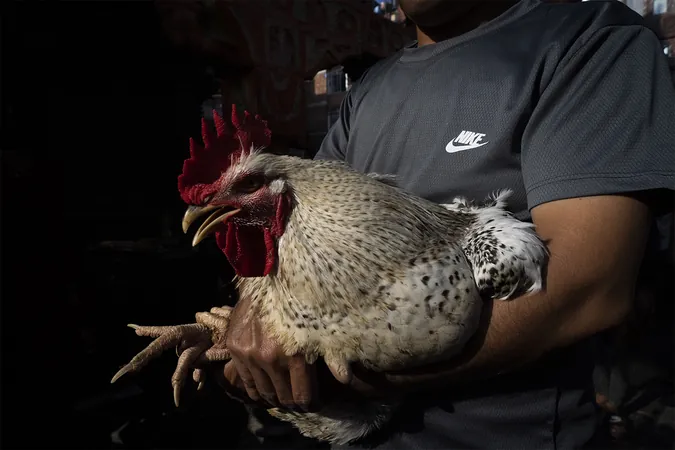
Is Bird Flu Evolving to Spread More Easily Among Humans? Here's What Experts Say!
2024-11-19
Author: Sarah
Is Bird Flu Evolving to Spread More Easily Among Humans? Here's What Experts Say!
Recently, concerns have emerged regarding the potential transmissibility of avian influenza, commonly known as bird flu, to humans. Experts, including virologist Scarpino, suggest that while the virus may have adapted within humans, the likelihood of person-to-person transmission is currently low.
Scarpino highlights that the individual in question likely contracted the virus from birds and then experienced viral mutations that allowed the virus to replicate more efficiently within the human host. This kind of mutation isn't unheard of; viruses often evolve to resist antiviral treatments, which can be alarming when considering the implications for public health.
Fortunately, stringent infection control measures at the medical facility where the patient is being treated are likely mitigating any risk of the virus spreading. According to Scarpino, it appears that the recent case did not involve human-to-human transmission. "We probably got lucky this time because the individual likely did not transmit to anyone," he explains.
However, the broader picture is concerning. There are ongoing outbreaks of avian flu impacting dairy farms across multiple states, poultry in 48 states, along with cases reported in cats and even pigs in Oregon. Scarpino notes that the increased complexity and frequency of these outbreaks suggest a troubling trend.
Pigs represent a particular risk; Scarpino describes them as an "evolutionary laboratory for host switching." Their respiratory system's structure makes them susceptible to new viral infections, heightening the concern among health experts.
Moreover, it is believed that many human cases of avian flu have gone undetected. Scarpino advocates for enhanced surveillance, particularly through wastewater testing, to gain a clearer picture of H5N1's spread within the population.
While the Center for Disease Control (CDC) maintains that the current outbreak poses a low risk to the general public, the severity of past outbreaks—where the avian flu has had a mortality rate of 53% among infected individuals globally—cannot be ignored.
"The key takeaway here is that the more people who become infected, the higher the chances for the virus to evolve," Scarpino warns. "It’s a numbers game." As the world continues to monitor the situation, vigilance remains paramount in preventing a potential public health crisis from evolving.
Stay tuned for more developments on this crucial topic, as the intersection of human and viral evolution could bring significant implications for our health in the future!




 Brasil (PT)
Brasil (PT)
 Canada (EN)
Canada (EN)
 Chile (ES)
Chile (ES)
 España (ES)
España (ES)
 France (FR)
France (FR)
 Hong Kong (EN)
Hong Kong (EN)
 Italia (IT)
Italia (IT)
 日本 (JA)
日本 (JA)
 Magyarország (HU)
Magyarország (HU)
 Norge (NO)
Norge (NO)
 Polska (PL)
Polska (PL)
 Schweiz (DE)
Schweiz (DE)
 Singapore (EN)
Singapore (EN)
 Sverige (SV)
Sverige (SV)
 Suomi (FI)
Suomi (FI)
 Türkiye (TR)
Türkiye (TR)